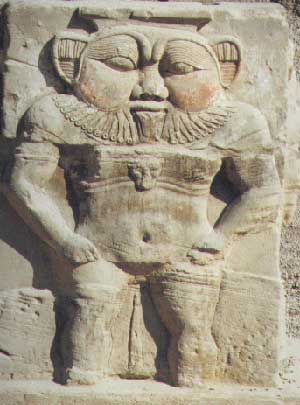Ancient Egyptians Respected Dwarfs and Did Not View Them as Physically Deficient
 |
|
The Dwarf God Bes |
A team of researchers at Georgetown University in the United States has explored biological remains and artistic evidence of dwarfs in ancient Egyptian society. They discovered that the ancient Egyptians revered dwarfs as deities, with many holding significant positions within the family structure.
In modern times, doctors have identified 100 medical conditions that result in dwarfism, primarily caused by a lack of cartilage development, leading to shortened limbs. This condition affects approximately 25,000 births each year, with about 75% of individuals with restricted height having average-sized parents.
The American researchers studied ancient Egypt due to its dry, hot climate and the well-preserved burial systems that safeguarded human bones. They investigated both the high-status dwarfs and those of ordinary standing in society.
They found the earliest evidence of dwarfs dating back to the Badarian period (around 4500 BCE), along with several skeletons from the Old Kingdom (2700 – 2190 BCE). Additionally, there are numerous depictions of dwarfs on the walls of tombs, on pottery, statues, and other artifacts.
Dwarfs are depicted in at least 50 tombs, and the repeated imagery suggests their close relationships within society. These illustrations show dwarfs serving as attendants, overseers, animal caretakers, jewelers, dancers, or entertainers. Some held high positions in the royal court and had enough authority to be buried in the royal cemetery, near the pyramids. Ancient Egyptian mythology also featured two dwarf gods: Bes and Ptah.
Bes is known as the protector of sexuality, women, and children. His temple was recently excavated in the Bahariya oasis located in Egypt. The god Ptah is associated with rebirth and rejuvenation.
Dr. Chahira Kozma stated: “The burial area and the artistic images have provided insight into the status of dwarfs in the daily life of ancient Egyptians. Dwarfs were accepted in society, and their condition was never seen as a physical deficiency.”


















































